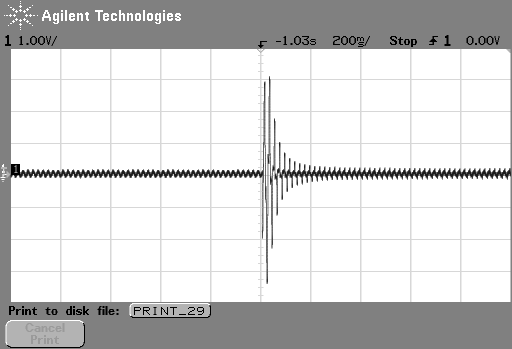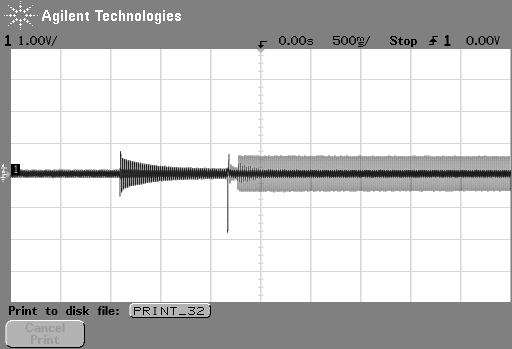HP 6023A PSU again :) This time R1, which is a 20ohm 7W fusible. The relay pulls 1s after power is applied and I assume that the general idea is to take the egde of the rather substantial inrush into C2, C3, C4.
Since it is fusible it will blow in case something goes wrong at the input filter or later. Now the closest I can find is Yageo FKN7WSJR-91-22R from Digikey which is 22 ohms, but not stocked. OK, what I have there now are three 68ohm in parallell, but I want to stick to the original as far as possble. So what would be better? 22 ohm 7W or two 10ohm 3.5W of I can find such a beast?
Edit: When I compare to another HP unit (HP6038A), it says "0811-3667 res 20 5% 7W", no mention of fusible?
Edit: I tried inrush limiting NTCs as per suggestions below in answers and comments. This is what the input current looks like with a fixed resistor of 22.6 ohms:
The first cycle is 20A or more. Unsure as we are outside the linear region of the transformer. With a 25 ohm NTC:
Two 80 ohm 1,6A (https://www.mouser.fi/ProductDetail/871-B57236S800M51) in series:
This was with the PSU set to output 100W into a resistive load. You can see the kick when the relay kicks in and then the load turns on. So, a 80-160ohm NTC?
It is rated for an Imax of 1.6A, but that is steady state, right. This NTC will only have any current through it for 1s (or if the relay fails). The label on the instrument says 850VA max and the mains fuse is 8A. 850VA at 230V is 3.7Amps. Should I select an NTC that is rated for 3.7amps? I guess not as there are not any large enough ones with that rating.
I feel more inclined to follow the table on page 3 of the datasheet where they discharge through the NTC. Or would the Ametherm MS22 12104 which is rated 120ohms 4A be a better choice?




